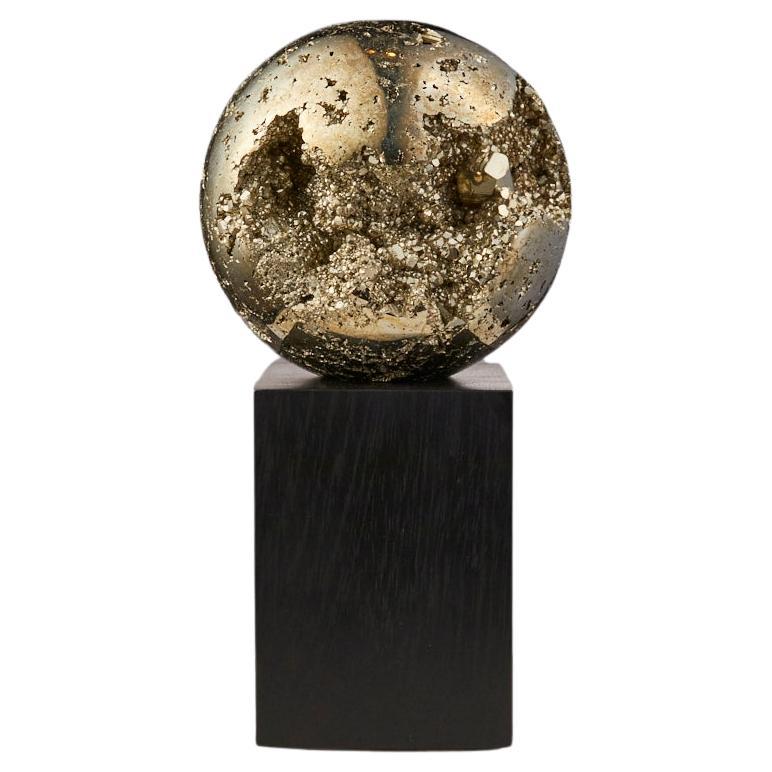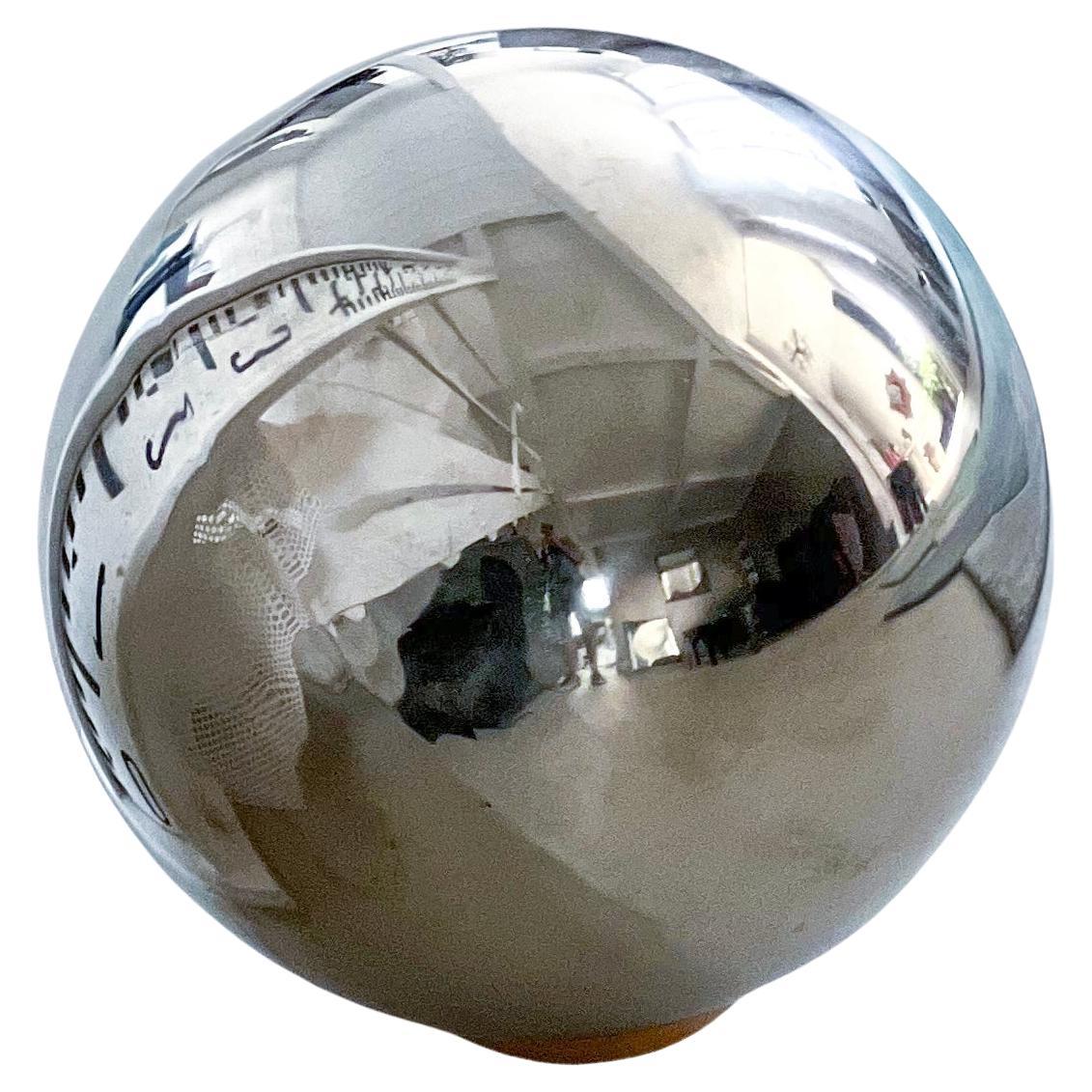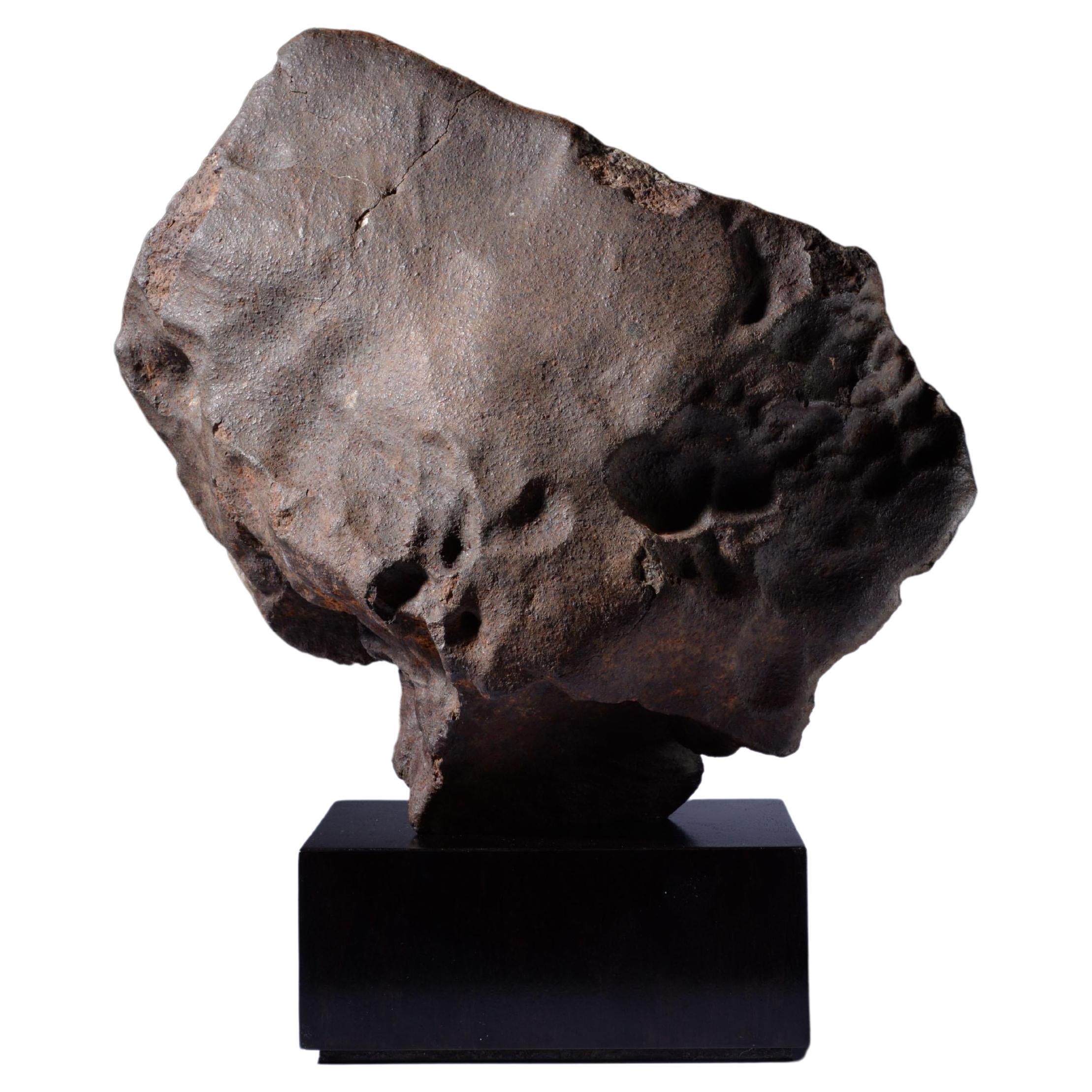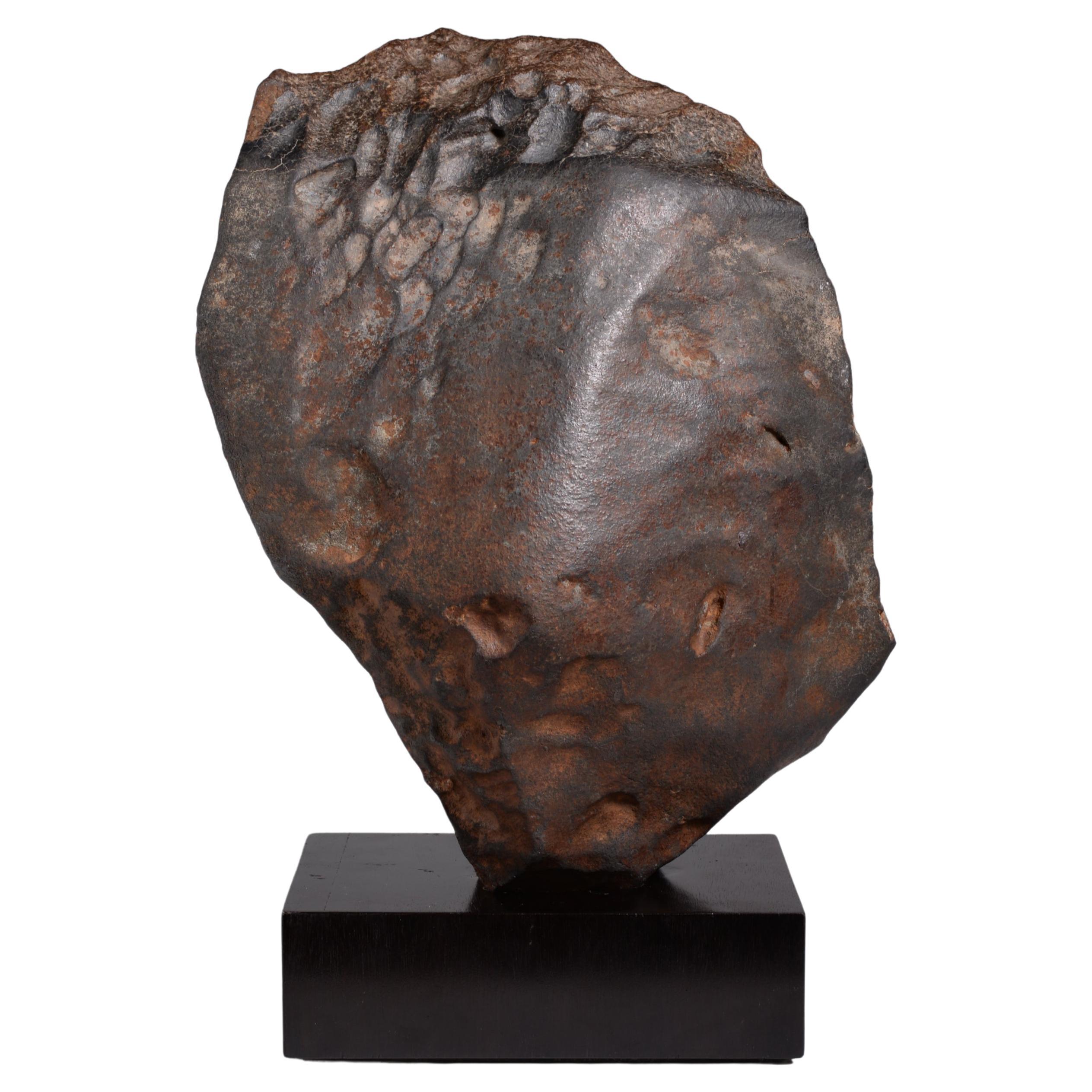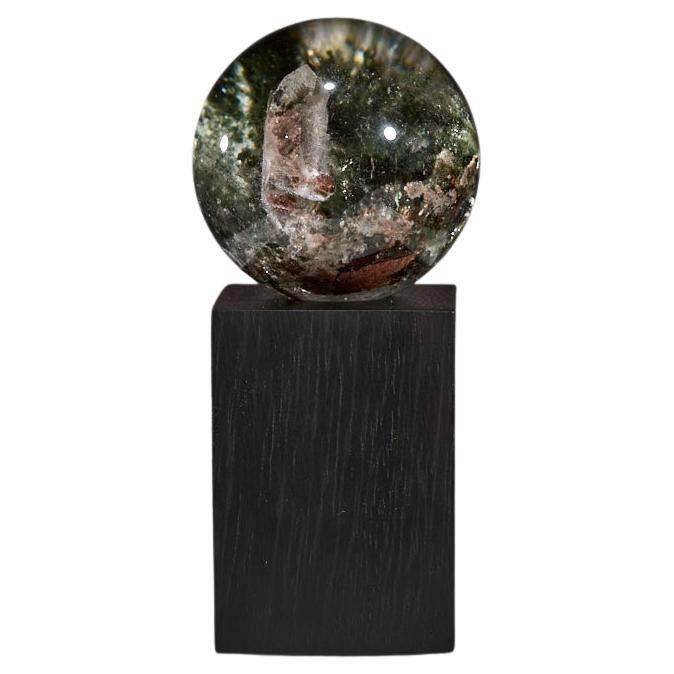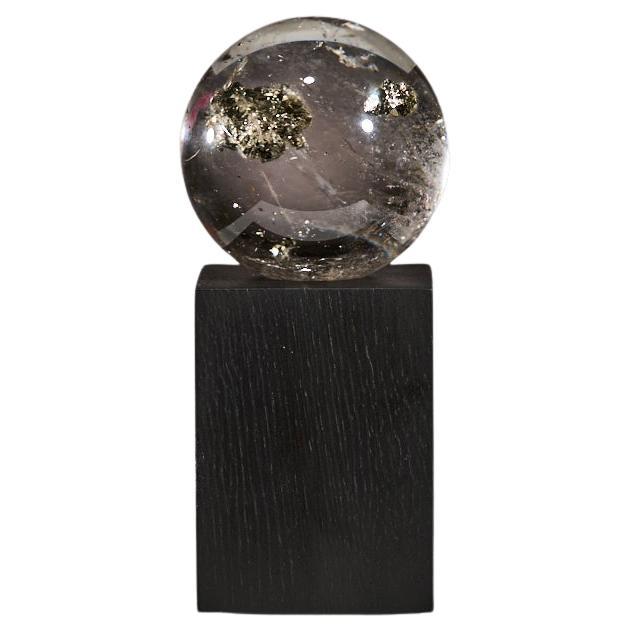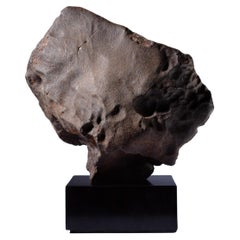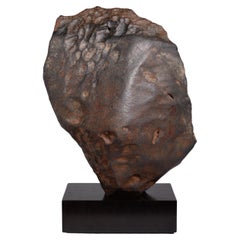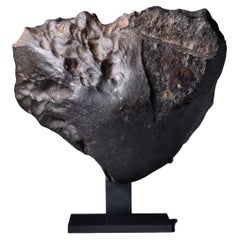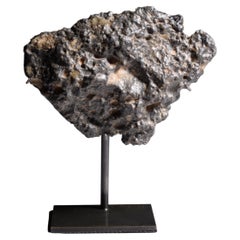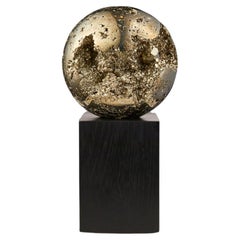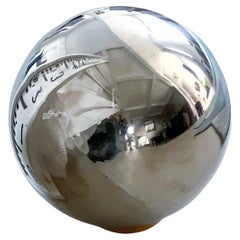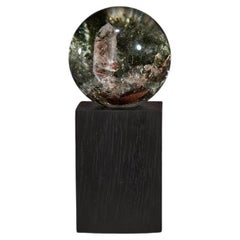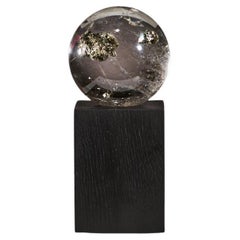Items Similar to Extraterrestrial Iron Sphere from the Aletai Meteorite
Want more images or videos?
Request additional images or videos from the seller
1 of 5
Extraterrestrial Iron Sphere from the Aletai Meteorite
$13,096.81
£9,500
€11,093.58
CA$18,108.67
A$19,881.06
CHF 10,371.99
MX$240,588.47
NOK 129,996.80
SEK 122,491.16
DKK 82,810.65
About the Item
A magnificent meteorite sphere, cut from the famous Aletai meteorite and polished to reveal the shimmering iron-nickel matrix and the beautiful crystalline Widmanstätten pattern — a striking, criss-cross structure unique to extraterrestrial iron.
This exceptional sphere, fashioned from the famous Aletai meteorite, offers a rare three-dimensional view of its interior crystalline matrix — composed
chiefly of interweaving bands of two iron-nickel alloys: taenite and kamacite. Kamacite is unique to meteorites and does not naturally occur on Earth.
The Aletai meteorite is of particular scientific interest because of its unique chemical profile. Indeed, it belongs to the rarest category of iron meteorites known - IIIE - of which there are only 16 members on record. Of these, it is one of only two which have notably anomalous make-ups, containing the largest amount of gold of any specimen in the group, as well as considerable quantities of schreibersite - a rare phosphate mineral, which gives Aletai samples their distinctive lustrous surface. First brought to our planet by meteorites billions of years ago, this phosphate mineral is also thought to be the source of the reactive phosphorus that created the necessary conditions for the very beginnings of life on Earth.
The impact of the Aletai meteorite was among the most dramatic of all known meteorite falls, with its skipping-stone-like trajectory producing the largest recorded strewn field in history. Fragments of the original parent body blasted apart by thermal shock as it entered the atmosphere, and scattered across an expanse that reached some 267 miles. One of these masses, lodged in the foothills of Inner Mongolia’s Altai Mountains, appears to have been known to the Russian painter Nicholas Roerich (1874-1947), who had visited Mongolia in the 1920s and 30s. The mass seems to have inspired the ʻsacred stone’ that features in his early designs for the staging of the 1948 performance of Stravinsky’s, ʻThe Rite of Spring’.
ALETAI METEORITE SPHERE
IRON - IIIE
Circa 4.5 billion y/o
Weight: 676 g
Diameter: 5.4 cm
PROVENANCE
Discovered in Xinjiang Province, China.
- Dimensions:Height: 2.13 in (5.4 cm)Diameter: 2.13 in (5.4 cm)
- Materials and Techniques:
- Period:
- Date of Manufacture:4.55 billion years before present
- Condition:Wear consistent with age and use.
- Seller Location:London, GB
- Reference Number:1stDibs: LU1052244470442
About the Seller
5.0
Recognized Seller
These prestigious sellers are industry leaders and represent the highest echelon for item quality and design.
Established in 2007
1stDibs seller since 2014
103 sales on 1stDibs
Typical response time: 6 hours
Associations
LAPADA - The Association of Arts & Antiques DealersInternational Confederation of Art and Antique Dealers' AssociationsThe British Antique Dealers' Association
- ShippingRetrieving quote...Shipping from: London, United Kingdom
- Return Policy
Authenticity Guarantee
In the unlikely event there’s an issue with an item’s authenticity, contact us within 1 year for a full refund. DetailsMoney-Back Guarantee
If your item is not as described, is damaged in transit, or does not arrive, contact us within 7 days for a full refund. Details24-Hour Cancellation
You have a 24-hour grace period in which to reconsider your purchase, with no questions asked.Vetted Professional Sellers
Our world-class sellers must adhere to strict standards for service and quality, maintaining the integrity of our listings.Price-Match Guarantee
If you find that a seller listed the same item for a lower price elsewhere, we’ll match it.Trusted Global Delivery
Our best-in-class carrier network provides specialized shipping options worldwide, including custom delivery.More From This Seller
View AllSculptural Oriented Meteorite
Located in London, GB
Oriented Chondrite Meteorite Circa 4.56 Billion y/o
Chondrite
24 x 20 cm, 28 cm tall on base
7.1 kg
A sculptural and beautifully weathered chondrite meteorite; upon entering the atmosphere, this extraterrestrial stone would have heated the surrounding air to a temperature of over 1700 C, higher than that of the hottest lava on the planet, and enough to melt away its outer layers, leaving its surface rippled with regmaglypts, thumb-shaped impressions formed as superheated rock streaked off of the main body as it careened toward the earth. The last layer of the rock to melt would have re-solidified as the meteorite made impact, forming a charcoal coloured fusion crust, which has taken on a deep ochre-tinted patina.
Chondrite meteorites such as this example were formed at the very beginning of our solar system, by the accretion of various types of dust and small grains, adrift in the vacuum of space and, as such, provide important clues about the birth of our own planet. This piece is an especially rare specimen, known as an oriented meteorite...
Category
Antique 15th Century and Earlier Natural Specimens
Materials
Stone
Large Chondrite Meteorite with Regmaglypts
Located in London, GB
NWA 12759
Stone, Chondrite - L5
18.3 KG
“This specimen of the NWA 12759 L5 chondrite has a smooth posterior fusion crust where meteoritic melt pooled as the rock descended through the atmosphere and was heated by friction with molecules of air. The meteorite is from the L-chondrite asteroid that was destroyed by an energetic collision 470 million years ago.”
Dr Alan E. Rubin, PhD Department of Earth, Planetary, and Space Sciences, UCLA
Detached from its parent body by a mighty impact, this large, oriented meteorite travelled over a hundred million miles through space before falling to Earth in the North African desert. Beautiful regmaglypts radiate from the apex of its cone shaped nose. These elongated dimples formed when streaks of superheated molten rock streamed off the meteor’s surface as it blazed through the atmosphere. The entire piece is coated in a glossy, umber-coloured fusion crust and close examination reveals remnants of encrusted, orange dirt.
Whilst most meteors tumble as they travel through the Earth’s atmosphere, oriented meteorites...
Category
Antique 15th Century and Earlier Moroccan Natural Specimens
Materials
Stone
Oriented Stone Meteorite
Located in London, GB
Oriented Stone Meteorite
Chondrite
5.00 kg
Detached from its parent body by a mighty impact, this large, oriented Meteorite travelled over a hu...
Category
Antique 15th Century and Earlier North African Natural Specimens
Materials
Stone
Lunar Meteorite - A piece of the Moon
Located in London, GB
A beautiful fragment from a lunar meteorite, among the rarest of all geological finds. This specimen belongs to NWA 11303, a feldspathic regolith breccia which formed when the shock ...
Category
Antique 15th Century and Earlier Algerian Natural Specimens
Materials
Stone
Large Sculptural Iron Meteorite
Located in London, GB
Stony-iron, pallasite - PMG
Circa 4.5 Billion y/o
Weight: 34.68 kg
Height (including base): 53 cm
Width: 29 cm
A magnificent and extremely sculptural specimen of the Seymchan meteor...
Category
Antique 15th Century and Earlier Natural Specimens
Materials
Iron
Lunar Meteorite - A Piece of the Moon
Located in London, GB
A beautiful section of the lunar meteorite Gadamis 003, discovered in the oasis Berber town of Ghadames, Libya, and revealing a magnificent greyish-white spotted interior, evoking th...
Category
Antique 15th Century and Earlier Natural Specimens
Materials
Stone
You May Also Like
Pyrite crystal sphere
Located in London, GB
This beautiful pyrite sphere from Peru shines with a golden metallic
surface and has crystals of different sizes all around it. Some parts of the
sphere are open, allowing you to loo...
Category
Antique 15th Century and Earlier Peruvian Natural Specimens
Materials
Crystal, Rock Crystal, Pyrite
Stainless Steel Ball Sculpture - Space Age Decorative
Located in Milano, IT
Decorative Steel Sculpture - Mirror Polished Steel Sphere - Space Age Decorative
Unusual, attractive and highly decorative abstract sculpture from the 1980s - a stainless steel ball...
Category
Vintage 1980s Space Age Abstract Sculptures
Materials
Steel, Stainless Steel
$703 Sale Price
20% Off
Inner landscape – Quartz sphere with crystal inclusion
Located in London, GB
This stunning quartz sphere from Zambia reveals a hidden world inside.
From its clear surface, you can see unique mineral formations that rise
like tiny mountains. At the center, a s...
Category
Antique 15th Century and Earlier Zambian Natural Specimens
Materials
Quartz, Rock Crystal
Golden pyrite in quartz sphere
Located in London, GB
This luminous quartz sphere from Brazil features brilliant golden pyrite
inclusions suspended within its crystal-clear interior. Each metallic bloom catches the light like miniature ...
Category
Antique 15th Century and Earlier Brazilian Natural Specimens
Materials
Quartz, Rock Crystal, Pyrite
Metal Patinque Boule Ball, France, c. 1920
Located in New York City, NY
Patinaed metal balls with a unique texture, welded.
Category
Vintage 1920s French Abstract Sculptures
Materials
Metal
Alessio Tasca Anthracite Ceramic Sphere Sculpture, Italy, 1960s
By Alessio Tasca
Located in Rotterdam, ZH
Exceptional anthracite metallic enameled sphere sculpture by Alessio Tasca, Italy, circa 1968. Interesting extruded sphere shape with a beautiful and exceptional metallic anthracite ...
Category
Vintage 1960s Italian Mid-Century Modern Abstract Sculptures
Materials
Ceramic
More Ways To Browse
Antique Sphere
Mongolia Antique
Iron Bands
Iron Sphere
Nautilus Mounted
Oriented Meteorite
Painted Ostrich Egg
Petrified Wood Vase
Russian Hardstone
Stand For Coco De Mer
Alabaster Grape Cluster
Butterfly Sculpture In Glass Dome
Crocodile Fossil
Crystal Sphere Stand
Giant Turtle Shell
Green Glass Flower Pot
Horny Coral
Large Lapis Lazuli Spheres
